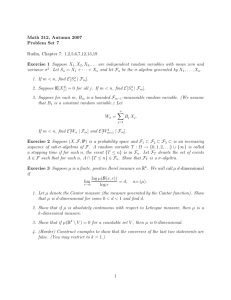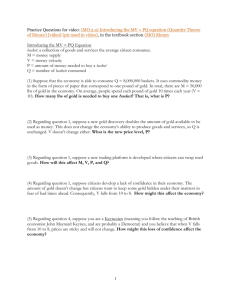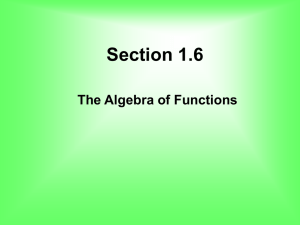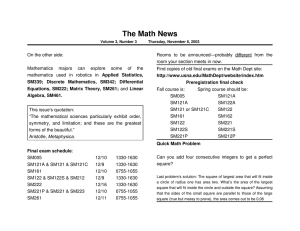Section 1.4 Complete
advertisement
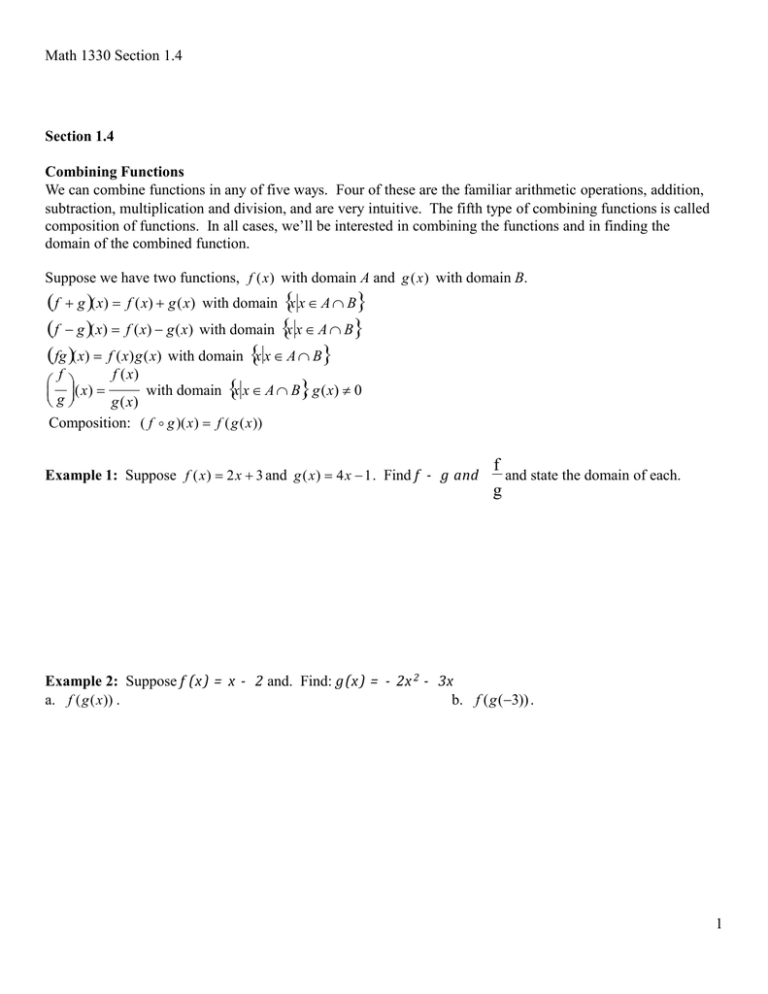
Math 1330 Section 1.4
Section 1.4
Combining Functions
We can combine functions in any of five ways. Four of these are the familiar arithmetic operations, addition,
subtraction, multiplication and division, and are very intuitive. The fifth type of combining functions is called
composition of functions. In all cases, we’ll be interested in combining the functions and in finding the
domain of the combined function.
Suppose we have two functions, f (x) with domain A and g (x) with domain B.
f g (x) f (x) g(x) with domain x x A B
f g (x) f (x) g(x) with domain x x A B
fg (x) f (x)g(x) with domain x x A B
f
f (x)
(x)
with domain x x A B, g(x) 0
g
g(x)
Composition: ( f g )(x) f (g(x))
Example 1: Suppose f (x) 2x 3 and g(x) 4x 1 . Find f - g and
f
and state the domain of each.
g
Example 2: Suppose f (x ) = x - 2 and. Find: g(x ) = - 2x 2 - 3x
b. f (g(3)) .
a. f (g(x)) .
1
Math 1330 Section 1.4
12
. Find:
8x and g(x)
Example 3: : Suppose f (x)
x
x 1
a. f (g(x)) .
b. f (g (6)) .
The domain of f g is {x B : g (x) A} or To find the domain of f g , first compose the functions and find
the rule for f (g (x)) . Then find the domain of this new function f (g (x)) . Also find the domain of g ( x) (the
“inside” function). Combine these and you will have the domain of f g .
Example 4: Let f (x)
1
and g(x)
x 2
2
x 5 . Find the domain of the composed function.
2
Math 1330 Section 1.4
Example 5: The graphs of two functions, f and g, are shown below. Find the following.
f(x)
y
x
g(x)
a. g(2) f (1)
b. ( f g)(1)
c. (g f )(3)
d. g( f (2))
e. f (g( f (2)))
Example 6: Given the following graph:
a.
List the open intervals where the function is increasing.
b.
List the open intervals where the function is decreasing.
c.
Locate the local minima, if any (what and where are the local minimums).
d.
Locate the local maxima, if any (what and where are the local
maximums).
e. This function is symmetric to?
3






